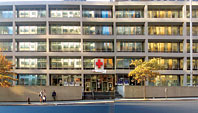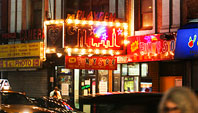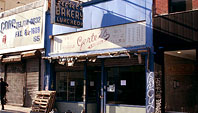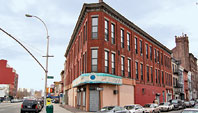There’s collateral damage from New York’s construction boom. Making room for all those new buildings means tearing down many old ones. It’s a radical transformation of the cityscape: The Department of Buildings issued 3,653 demolition permits in 2006 and another 2,952 in 2007. Landmarked structures are protected, of course, but just because something’s not a landmark doesn’t mean its passing should go unnoticed. Here, some of the notable buildings lost in 2007.

COLONIAL CLUB, Upper West Side
Built: 1892.
What it was: Designed by Henry Kilburn as a “Colonial palazzo,” the first social club in the nabe.
What it will be: A nineteen-story tower with 196 rental units and ground-floor retail.

AMERICAN RED CROSS BUILDING, Upper West Side
Built: 1963.
What it was: The charity’s regional HQ, designed by Skidmore, Owings, and Merrill, became a 9/11 destination as New Yorkers queued to give blood. The Red Cross sold it for $72 million in 2004.
What it will be: A 42-story rental tower by Handel Architects, who did the very tall and very glassy Trump Soho.

177–179 FLATBUSH AVENUE, Downtown Brooklyn
Built: Circa 1930s.
What it was: Originally a general store; lately, an auto-repair shop, a car-stereo repair shop, and the JRG Fashion Café. Bruce Ratner’s bulldozers demolished the buildings this year.
What it will be: The site for one of Frank Gehry’s controversial Atlantic Yards buildings, eventually.

THE PLAYPEN, Times Square
Built: 1916.
What it was: Designed by Eisendrath & Horwitz, the firm behind Beth Elohim synagogue in Park Slope, it was built as a vaudeville theater, morphed into a movie house, and later became a porn palace.
What it will be: A 22-story hotel and small adjacent apartment building at Eighth Avenue and 44th Street.

GERTEL’S BAKERY, Lower East Side
Built: Early 1900s.
What it was: A five-story, mid-1800s tenement was converted to the one-level bakery where, most recently, Latino teens sold kosher pastries and giant, shiny challahs to Hasidic Jews.
What it will be: The DOB calls the site a condominium. Gertel’s pastries, now made in Brooklyn, are still available around the corner at Flicker’s cafe.

HACKETT BUILDING, Long Island City
Built: 1885.
What it was: Queens’ City Hall until the city’s 1898 consolidation; Borough Hall until 1916. Most recently, it housed a coffee shop.
What it will be: An eight-story, 31-unit glass condo.
Have good intel? Send tips to intel@nymag.com.